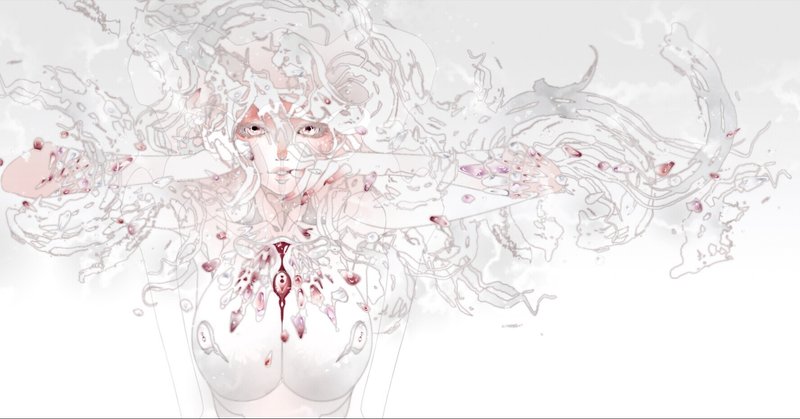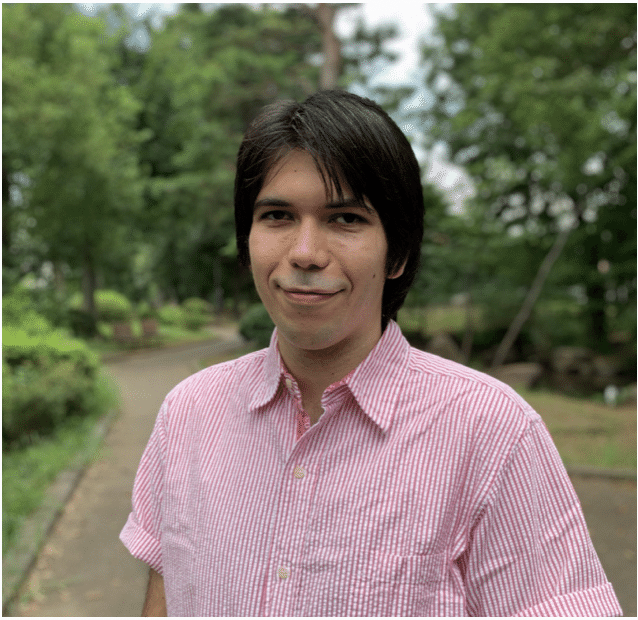
Why NFTs?-Author's Statement about Japanese first SF novel NFT"Pure" translated in English
Why NFTs?
Pure is a love story set in a world where women can’t get pregnant unless they eat their male partner after sex. This short story was first published on Hayakawa Publishing’s online blog in 2019. It attracted significant attention, receiving over 200,000 page views, and becoming one of their most read articles that year. In 2020 it was collected in a book of the same title with four other short stories, also published by Hayakawa. Apple selected the book as one of their Best Science Fiction works for 2020. An Italian translation of the full book is currently in the works.
This NFT includes a downloadable epub of Pure in English translation as well as a cover art.
Pure is the first work of Japanese SF literature by a professional author to be released as an NFT. It is also the first NFT of a Japanese short story to be released simultaneously with its English translations. While the Japanese story was published by Hayakawa Publishing in 2020, these English translations are yet to be published on any other platform or through a traditional publisher. In other words, these NFTs are currently the only English translation available.
I have decided to release Pure and its English translations as NFTs for the following reason. By releasing this story and its translations as NFTs, I hope to suggest a new possibility for literary translation and encourage more translations from Japanese.
As those who know the publishing world are well aware, literary translation requires significant unpaid work. Many translators must not only translate but perform the job of agents as well. They read through mountains of texts, find the good ones, take their proposals to foreign publishers, get permission from Japanese publishers and authors, translate, and only then is their work published in magazines or as books. The hurdles to getting something published are high. This is especially the case for emerging authors and translators.
If, luckily, they’ve finally gotten their work published, the rate for short stories in magazines varies greatly, but is generally quite low. If a work is published as a book, a translator can receive a reasonable wage, but translation itself requires enormous energy, and it’s incredibly challenging for a translator to release multiple books in a single year. Furthermore, there are often cases where they work for no pay until their work is published.
Several of my stories and essays have been translated and published abroad, but this situation is almost always the same in every country. For that reason, most translators of Japanese literature have other jobs, such as teaching as adjunct professors, and translate on the side.
Literary translation requires tremendous skill and deep understanding of Japanese culture and history, yet those who strive to become translators must think about balancing this work with another trade as well.
In other words, Japanese literary translation is currently not a job where one can make a living.
It is essential that creators be able to make a living with their work. This is true for novelists and for translators.
It’s easy to give up and say we can’t change the industry. But even I, who am not a professional translator or expert on translation, start to wonder when I talk to translators. With things the way they are now, won’t it be hard? Won’t it be hard for the world of translation to grow?
At the moment, Japanese art and literature is in a bit of a boom. There is a Japanese literature boom in Italy, and since Yu Miri won the National Book Award in 2020 for Tokyo Ueno Station, women writers from Japan have been gaining attention in the English-speaking world as well.
It is a shame that even now with this fresh momentum translators cannot make a living on their work alone.
The sale of NFTs may offer a new source of income for authors in the future. If authors and translators join hands and begin to release their translated works as NFTs, all those pieces that never made it into books and magazines might find a new way to connect with the world.
Soon after Pure’s publication I met Laurel Taylor (who has translated works of Aoko Matsuda and Tomoka Shibasaki) through the Washington University in St. Louis-Harvard Book Club. I was also contacted by Kalau Almony (who has translated works such as Nakamura Fuminori’s Cult X). Thanks to these meetings, there are currently two English translations of this story. Both translators are searching for publishers who will take the whole book, but short story collections are much harder to publish than full novels and we’ve yet to find an English-language publisher.
To publish two English versions at the same time is, in the translation industry, quite an irregular occurrence, but I thought it would be interesting to release both. Both translations will be released simultaneously.
I am also planning to release NFTs that include rights to translations to other languages (excluding Italian) based on the English as well as NFTs that include film rights and rights to sell adaptations as NFTs.
I want to create a world where translators can make a fair wage and don’t have to worry about making a living on their work. And through that, I hope to show the word the beauty of Japanese art and literature.
I have continued to publish my work online since I first released my stories and essays on my own website when I was fourteen. Most of my works published and sold as books or in magazines have also been released online for free online. Given my background, the concept of NFTs and releasing my work through them feels quite natural to me.
This project is a first attempt to realizing a new profit model for talented authors and translators through the sale of NFTs. Works will take on a new variety of forms, and hopefully the art of literary translation will find a new source of vitality.
The concept of NFTs is quite new. Connecting this new concept to the long history Japanese literature and art will, I hope, bring new opportunities to the translation industry.
If you support this project, please consider making a bid.
Outline
Pure is a collection of five short stories by Miyuki Ono, originally published in 2020 by Hayakawa Shobo, Japan’s preeminent science fiction publisher. The stories bring together both science fiction and yuri tropes in a critique of society’s rigid definitions of sex and gender, and an exploration of the ways they persist and continue to shape individuals and their actions even in seemingly distant futures.
Pure is also an opportunity to center women’s voices, both on the level of narrative, and in the world of translation.
Pure has already been a commercial success in Japan. When the title story (the attached sample) was released online, it garnered over 250,000 views in less, making in the most read article on “SF Magazine Online,” Hayakawa’s online magazine. And the book including Pure won the 2020 Best SF Award from Apple Japan.
About Pure the Book
Pure is a collection of five short stories by Miyuki Ono, originally published in 2020 by Hayakawa Publishing, Japan’s preeminent science fiction publisher. The stories bring together both science fiction and yuri tropes in a critique of society’s rigid definitions of sex and gender, and an exploration of the ways they persist and continue to shape individuals and their actions even in seemingly distant futures. The stories take up a wide range of social justice issues, including reproductive futures, environmental destruction and climate change, and transgender rights and acceptance. What sets them apart from most Japanese SF is not their focus on social issues per se, but rather their examination of how sex and gender structure our understanding of those issues.
Pure centers women’s voices throughout. Four of the five stories are narrated by women, and three are centered on women’s relationships with other women. Ono herself represents a fresh voice in
Japanese science fiction, a field still dominated by men. That lack of female voices is further compounded in English, where works by women are even more rarely translated. While the situation has been improving in the world of literary fiction, translations of genre fiction by Japanese women still lag far behind those of men. Translation of Pure would begin to correct this disparity.
Pure has already been a commercial success in Japan. When the title story was released online, it garnered over 200,000 page views, making it the most read article on SF Magazine Online, Hayakawa’s online magazine. It also won the 2020 Best SF Award from Apple Japan. An Italian translation is currently in the works.
Content
Earth has become almost entirely uninhabitable due to human mismanagement. Through a gene-editing experiment meant to make humans more suitable for their new environs, women have gained superhuman strength, claws, fangs, and scales, and also must now consume the flesh of men in order to get pregnant. Yumi, a cadet in training for the national military, believes there must be more to life than simply eating men, having children, and fighting in endless wars to protect her country. One hunt, she discovers Eiji, the most beautiful man she’s ever seen, and his two female children born without scales and presumably left for dead on Earth. After Eiji saves her life, she begins to visit him regularly. But can their relationship survive societal pressure and Yumi’s own hunger?
About the Author

Miyuki Ono (1985-) was born and raised in Tokyo and graduated from Keio University. Her books cover a variety of genres, including a YA novel, Maison Tokinoyu (2018); a book of travel essays, If You're Tired of Your Life, a Spain Pilgrimage (2015); an autobiography, Life from a Wound (2015); and a picture book inspired by the Fukushima nuclear disaster, Dragon of Light (2014).
Her collection of science fiction short stories, Pure, was first published in April 2019 via Hayakawa Publishing's online platform, attracting more than 200,000 hits within a month of publication. Subsequently, it was also published in a print run in April of 2020, and named Best SF of 2020 by Apple Japan. An Italian translation is forthcoming in 2022.
Translator Bio
Kalau Almony

a Tokyo-based literary translator. He has translated works by Tahi Saihate, Fuminori Nakamura, and Nao-cola Yamazaki. Born and raised in Kailua, Hawaii, Kalau received his BA in Comparative Literature from Brown University and his MA in Japanese Literature from the University of Hawaii Manoa.
Laurel Taylor

Laurel Taylor (1989-) received an MFA in Literary Translation from the University of Iowa, where she worked on texts from Tomoka Shibasaki, Basho, Yaeko Batchelor, and others. Her translations have appeared in Transference, The Asia Literary Review, The Offing, and other publications. In 2017, she was a recipient of the PENPresents East Asia translation award. She is currently a PhD candidate in Japanese and Comparative Literature at Washington University in St. Louis, as well as a Fulbright Research Fellow at Waseda University. Additionally, she works as editorial staff for Asymptote, a premier magazine of literature in translation.
ありがとうございます。
